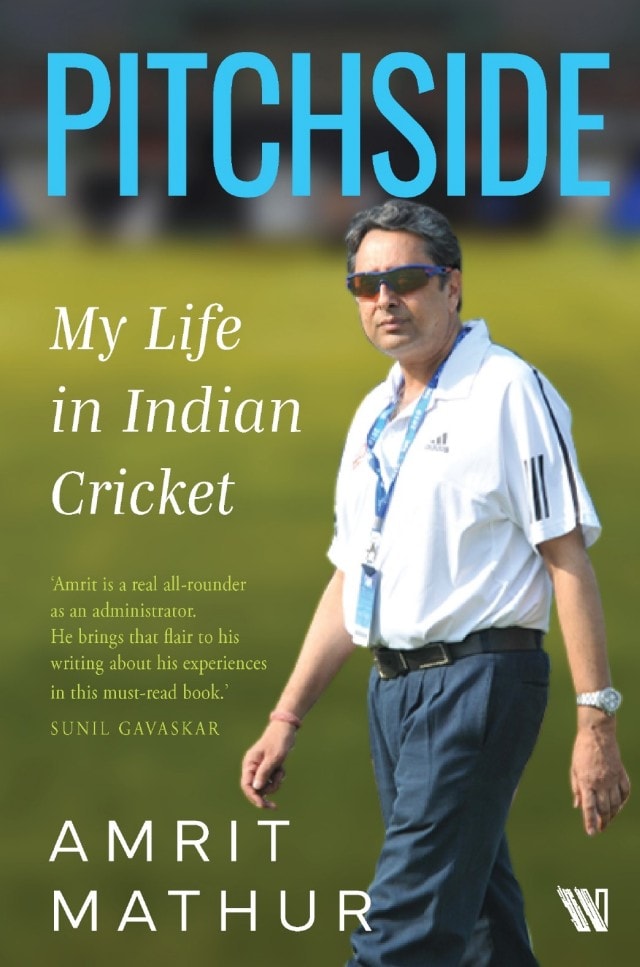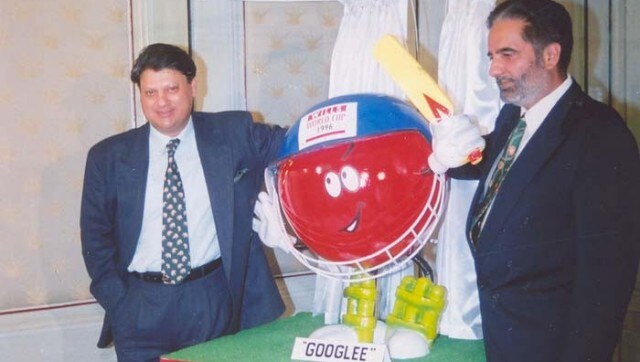Book excerpt from ‘Pitchside: My Life in Indian Cricket’: On how the 1996 World Cup bid was won
Book excerpt from ‘Pitchside: My Life in Indian Cricket’: On how the 1996 World Cup bid was won


‘Pitchside: My Life in Indian Cricket’, by long-term cricket administrator Amrit Mathur, brings to life insightful first-person accounts of some of Indian cricket’s most memorable moments. Anecdotes, events and matches are described from the perspective of an insider who has seen the game and the players up close for over three decades.
Mathur was the manager of the India team on the historic tour of South Africa in 1992. Later, he was part of PILCOM, the organising committee for the 1996 Cricket World Cup, also Chief Operating Officer (CCO) of the Delhi Daredevils (now Delhi Capitals) and General Manager of the BCCI.
“Cricket has been a major part of my life and in Pitchside I look at events, matches and the many players and people who enriched my cricket journey,” he said on the book’s release.
The book provides an insider account starting from the 1992 Friendship Tour in South Africa to the NatWest Series win in England in 2002, ICC Cricket World Cup 2003 in South Africa, the India tour of Pakistan in 2004 to the inception of the Indian Premier League in 2008.
The following excerpt provides a brief look at how the 1996 World Cup bid, by India, Pakistan and Sri Lanka, was won with Jagmohan Dalmiya and Madhavrao Scindia representing India’s interests at Lord’s.
Can you come over? It was Madhavrao Scindia on the phone and the urgent tone suggested he wasn’t actually asking. This was late one evening in January 1993, soon after I returned from the Indian team’s tour of South Africa. I rushed to his 27, Safdarjung Road residence and was shown into his office.
Scindia told me India was bidding for the 1996 World Cup and this would be put to vote by the ICC. The crucial question in the election arithmetic was which way South Africa (Ali Bacher) and Zimbabwe (Peter Chingoka) would go. I briefed him about the two gentlemen based on my recent interactions with them.
After a long chat about the possible scenarios, he saw me to the door. As I waited for my car to arrive, he said abruptly, I am going to London for the ICC meeting, why don’t you come with me? Taken by surprise, I muttered that I would need various government permissions (from my employers, the Railways) to travel abroad. He brushed aside my objections. Don’t worry, he said. I’ll speak to your minister. You make your travel arrangements. Within a week of that late-night meeting, I found myself in London, part of a small BCCI team that included Jagmohan Dalmiya and I.S. Bindra.
The right to host the World Cup was subject to a financial bid and, having done the maths, Dalmiya had persuaded Scindia to put the BCCI’s hat in the ring. The financial numbers were important because the ICC split the guaranteed amount paid by the host among (the few) Test-playing nations and (the majority) associate members. Driven by self-interest, members voted for whoever promised more money. To secure support from the Test-playing nations, an alliance was formed by India with neighbours Pakistan and Sri Lanka. PILCOM (Pak–Indo–Lanka Joint Management Committee) was formed with Pakistan and India as equal partners while Sri Lanka de-risked itself and decided against any commercial stake in the project. (PILCOM later became a template for Test-playing nations from the subcontinent when they wished to push a common agenda and speak in one voice.)
To get the associate ICC members on board, Indian-style election strategies were used. First, various Indian- and Pakistani-origin people controlling cricket bodies were identified. This was followed by an emotional appeal that sought to give PILCOM’s bid an anti-white (we need to teach the racist nations a lesson) angle.
But the critical bit was putting an attractive financial package on the table. In a clever move, PILCOM tweaked the commercial payout to offer a larger guarantee to each associate member by cutting back on the shares of the Test-playing nations. It also offered a larger piece of the financial cake to the ICC and sliced it in a manner that ensured the majority, i.e., the associates got a bigger helping.
The political reverse swing worked. PILCOM secured a majority (the white nations opposed and South Africa abstained, not wanting to offend either group) but there was a hitch because two or three of the Test-playing members held an indirect veto on the decision. The outcome was a deadlock but when the associates unanimously supported PILCOM, the ICC was compelled to award the 1996 World Cup to the subcontinent, with India, Pakistan and Sri Lanka jointly hosting the matches.
PILCOM Wins the Bid

ICC meetings are traditionally held at Lord’s, on the ground floor of the main pavilion. On the day of the meeting, delegates from different countries trickled in. As per procedure, two delegates from each Test-playing nation attended. Scindia and Dalmiya, president and secretary, represented the BCCI while Bindra and I waited outside in the Long Room. Keeping us company were our colleagues from Pakistan, among them General Zahid Ali Akbar, Ehsan Mani and Imran Khan.
For all of us, it was a long, frustrating wait. The meeting went on foreverand we, the backroom support team, had little to do. Surprisingly, the Wills World Cup, 1996 meeting attracted little attention and the media gave it a miss. Neither was Lord’s fussed about what was happening and although we waited all day, there was practically nothing to eat. The staff at Lord’s placed a self-service trolley in a corner that had tea, coffee and some cookies. That was all.
Bored by the wait, Imran and I stepped out of the Long Room in the afternoon and walked through the famous gate to stretch our legs and get some fresh air. No sooner had we taken a few steps along the boundary than a steward showed up to hand out a polite warning. Stepping on the grass is not allowed, sir, we were sternly told.
Imagine! This was in January, with no cricket on the horizon for at least three months. Could we have damaged the Lord’s turf in any way? Also, remember, this was Imran Khan, Pakistan captain and cricket legend, being told to take a walk for walking on the grass next to the boundary!
Excerpted with permission from ‘Pitchside: My Life in Indian Cricket’ by Amrit Mathur, published by Westland Sport, an imprint of Westland Books.
What's Your Reaction?



























































